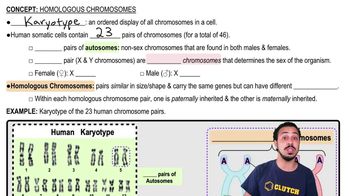Multiple Choice
Which of the following occurs in meiosis but not mitosis?
1811
views
1
rank
 Verified step by step guidance
Verified step by step guidance Verified video answer for a similar problem:
Verified video answer for a similar problem:



 8:09m
8:09mMaster Homologous Chromosomes with a bite sized video explanation from Jason
Start learning